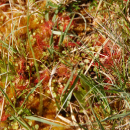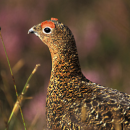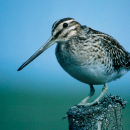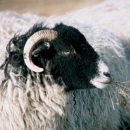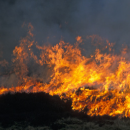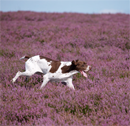23rd June 2017
Thursday 15th June saw a diverse group of stakeholders visit Wemmergill Estate to enjoy an informative day up on the moor and witness a variety of moorland management techniques in action.
Representatives from Natural England, North Pennines AONB and the International Union for the Conservation of Nature (IUCN) UK Peatland Programme joined Wemmergill Estate staff and Moorland Association Chairman Robert Benson and Director Amanda Anderson for an engaging visit that proved very useful for all.

L-R: John Pinkney (Wemmergill Head Keeper), Amanda Anderson (Moorland Association), Clifton Bain (IUCN Peatland Programme Director), Stephanie Bird-Halton (Natural England), Rob Stoneman (IUCN Co-Chair), Alistair Lockett (North Pennines AONB), Robert Benson (Moorland Association) and Joanne Richards (IUCN communications)
The measures being taken on Wemmergill Estate to safeguard the future of its treasured upland ecology, in particular the extensive work undertaken to ensure a fully functioning blanket bog system, were praised by all in attendance. A great deal of hard work has gone into blanket bog restoration initiatives whilst also maintaining the structural and vegetative diversity suitable for a thriving red grouse population.
To date the estate has successfully blocked 592km of grips on blanket bog resulting in the rewetting of thousands of hectares of peat and the restoration of active blanket bog. In the new management agreement a further 191km of grips will be allowed to naturally fill. In addition, 32 Ha of bare peat restoration will be undertaken to create functioning blanket bog communities across the estate.
To support these hydrological restoration measures, a red-amber-green ‘traffic light’ approach to vegetation management and restoration has been adopted across the peat bogs. So, for example, no management intervention will take place on very active wet bog across the site where the heather and other peat bog plants are in a good balance (the red zone). Elsewhere, in less active areas of drier bogs, management intervention (e.g. restoration cutting or burning and sphagnum inoculation) will or may take place to help to reduce the dominance of some species and rebalance the natural peat bog vegetation (the green and amber zones) in tandem with the grip blocking works to restore fully functioning active blanket bogs over a period of time.
Locations have been identified across the estate where annual visits and fixed point photographic monitoring will take place to see what effects these management works are having in achieving the joint outcomes of the new agreement and to inform blanket bog management and restoration activities into the future.
Rob Stoneman, Co-Chair of IUCN UK Peatland Programme:
“I was particularly struck by how forward thinking the management of Wemmergill Estate is and must pay tribute to the team who are inspiring and do a tremendous job in restoring the habitats of Wemmergill and running what is clearly a great sporting estate. The partnership between the Wemmergill team, Natural England and the North Pennines AONB is a beacon of good practice for all upland Britain.”
The shared outcome approach on show at Wemmergill is an excellent example of the wider collaborative strategy that Moorland Association members across the North of England are committed to implementing. Techniques to manage and improve blanket bog vegetation are continually evolving and methodologies being used as well as the results are widely shared between stakeholders.
Richard Johnson, Director of Wemmergill Moor Ltd: “Following the new outcomes approach to create this ground-breaking management plan has allowed us to build a fantastic working relationship of mutual respect, trust and understanding with Natural England for a multiple of socio-economic and environmental objectives. Wemmergill’s owners are very keen to be at the forefront of forward thinking land management that protects all that is special in our corner of rural County Durham as well has handing it to the next generation in better shape to face future challenges. This new management plan will do just that.”
The same inclusive and cooperative approach could and should be applied to all sorts of challenges that face the grouse shooting industry. It takes energy, commitment and pragmatism to agree and implement a mutually beneficial outcome but the results, such as those ably demonstrated at Wemmergill, make it all worthwhile.
Investing time in explaining and demonstrating successful moorland management initiatives – and the resultant intricate ecological balancing act – is an integral part of the Moorland Association’s work and we look forward to furthering our relationships with stakeholders across the board.


